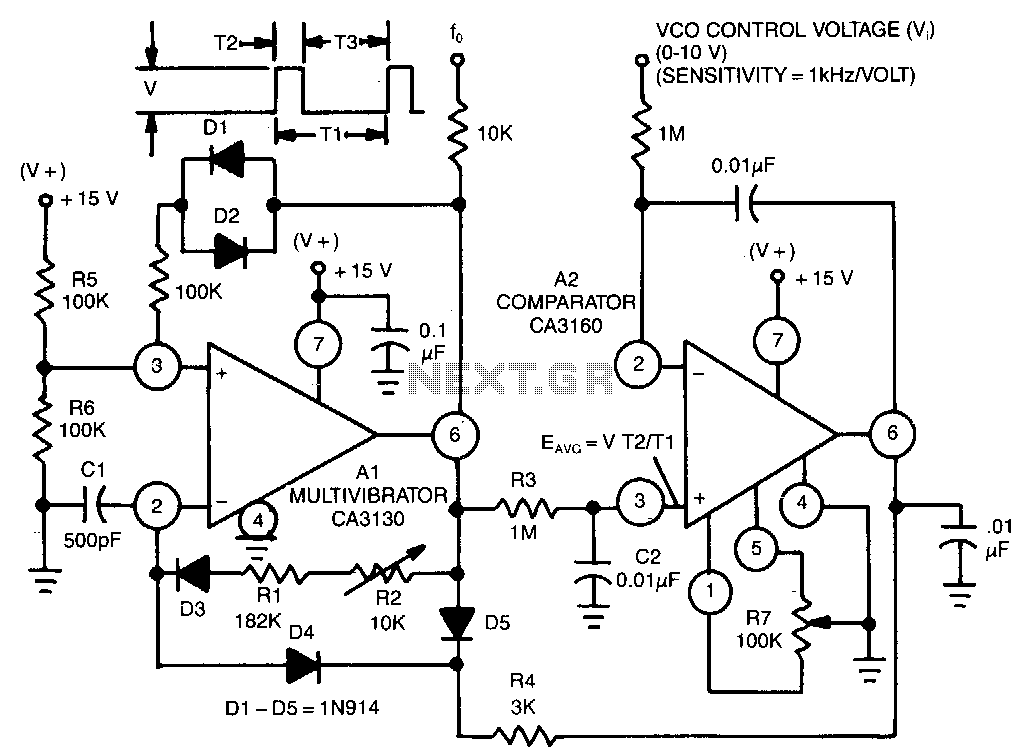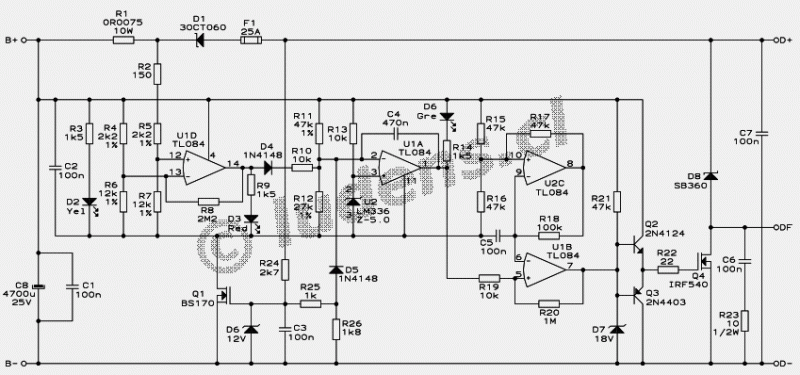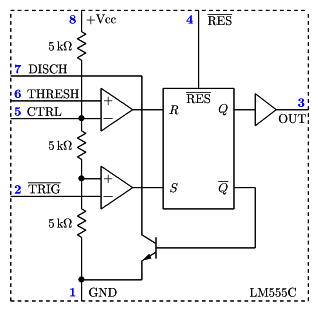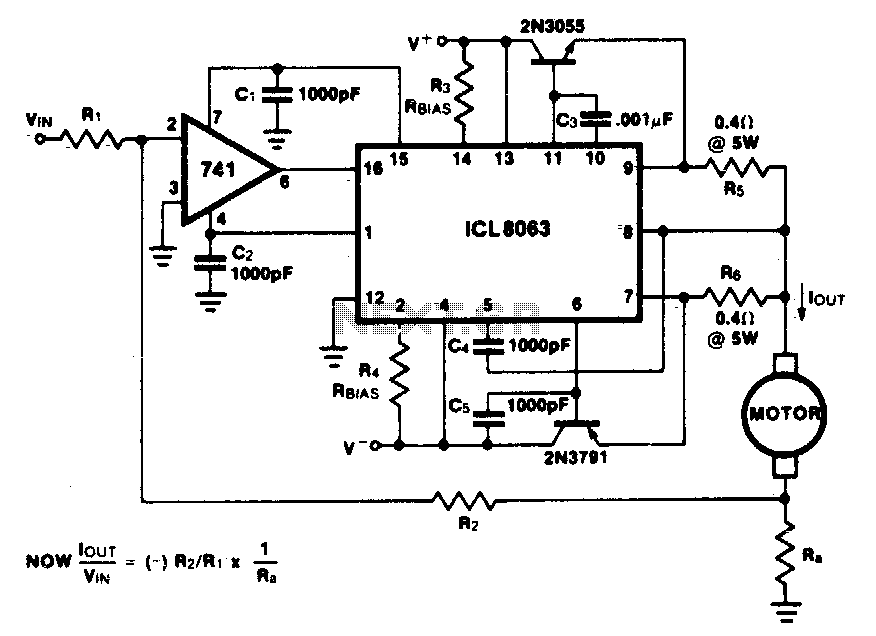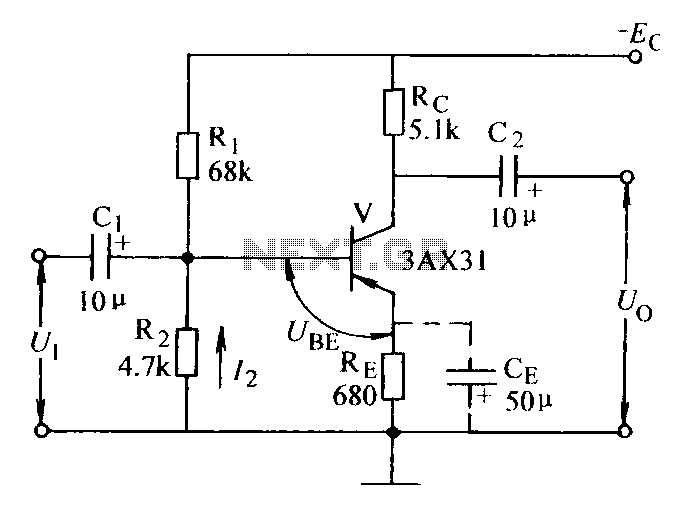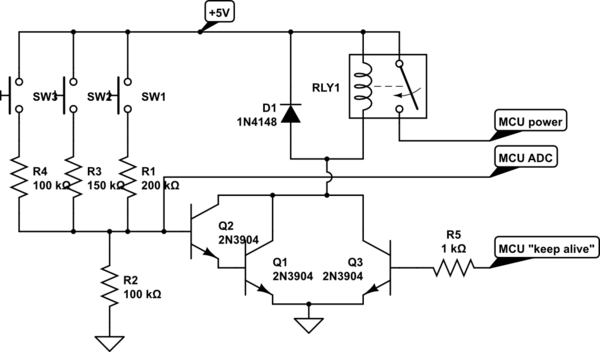
a voltage-controlled current sink / voltage-controlled resistor
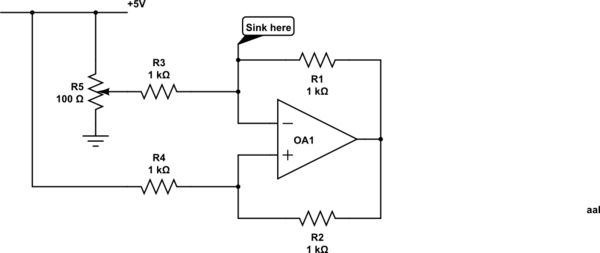
Control a current through several current-mirror devices (specifically the IREF pin on the TLC5940) using a single potentiometer. A modified Howland current source has been utilized, which works adequately with the specified resistor values for dimming an LED. However, it fails to function as a current sink with a 1.24V voltage source at the designated sink node. The circuit employs an LM324 quad op-amp. Suggestions are sought for exploring options for a voltage-controlled current sink, voltage-controlled resistor (VCR), or an R-controlled resistor. A minimalist circuit is desired to control at least six current mirrors (TLC5940s) with a single potentiometer, and accuracy is not a critical requirement. While VCRs have been constructed using photocells and LEDs, this approach is considered cumbersome. An optocoupler is also a potential solution, but linearity may pose challenges. A MOSFET can serve as a voltage-controlled resistor, provided it does not dissipate excessive power, although the resistance would be relatively small. Concerns have been raised about biasing issues in MOSFET/JFET circuits, and it is noted that non-linearity can potentially be mitigated by feeding the drain to the gate through a resistor. Variations in manufacturing within a single batch of MOSFETs may lead to significant differences in the linear characteristics and gate capacitance, complicating parallel operation of multiple FET-resistors driven from a single signal.
The circuit design addresses the need to regulate current through multiple current-mirror devices using a single adjustable control element. The TLC5940, a serial LED driver, requires precise control of the reference current at its IREF pin. The proposed approach employs a modified Howland current source, which is a configuration often used for current sources due to its ability to provide stable output current. However, the circuit's limitation as a current sink at a specified voltage necessitates alternative solutions.
To create a voltage-controlled current sink, several methods could be explored. One approach is to utilize a MOSFET in the linear region of operation, where it can be configured as a voltage-controlled resistor. The gate voltage can be adjusted via the potentiometer, allowing for control over the drain current. Care must be taken to ensure that the MOSFET operates within its safe limits, as excessive power dissipation could lead to thermal issues.
Another potential solution is the use of an optocoupler, which could facilitate isolation between the control circuit and the current mirror. However, the linearity of the output current in relation to the input control voltage may need to be characterized to ensure adequate performance.
For applications requiring minimal complexity, a design incorporating a single potentiometer to control multiple TLC5940 devices can be advantageous. The circuit could be designed such that the output from the potentiometer is fed into a summing amplifier or a buffer stage before being distributed to the IREF pins of the TLC5940s. This would maintain a consistent reference current across all devices, simplifying the control mechanism.
In summary, the design challenge involves creating a reliable and efficient voltage-controlled current sink that can manage multiple current mirrors with minimal complexity while addressing potential issues related to linearity and component variability.Control a current through several current-mirror device (specifically the IREF pin on the TLC5940 ) using a single potentiometer. I`ve tried using a modified Howland current souce as in the following schematic: While this works OK with resistor values as shown for dimming a LED, it doesn`t work as a current sink given a 1.
24V voltage source at the node marked sink. I am using an LM324 quad op-amp. If someone can suggest some avenues to explore for a voltage controlled I-sink, or voltage-controlled resistor (VCR), or an R-controlled resistor, etc. I would appreciate it. I`d like a minimalist circuit, if possible, as I`ll need to control at least six current mirrors (TLC5940s) for my application, with a single pot/trimmer, and accuracy is not really critical in this application.
People seem to have built VCRs out of photocells + LEDs, however, this seems a bit cludgey. I suppose an optocoupler is an option, however, I think linearity will be an (admitedly not huge) issue. A MOSFET can be used as a voltage controlled resistor, as long as it doesn`t dissipate too much power - although, this would be a fairly small resistance.
Kurt E. Clothier May 19 `13 at 2:15 People seem to complain about MOSFET/JFET circuits because of biasing issues, I guess. It seems that non-linearity can be overcome by feeding the drain to the gate through a resistor, right Do you want to make your comment into an answer angelatlarge May 19 `13 at 2:28 Something like that.
I`ve seen it done, but I don`t understand it quite enough to make a full answer. Maybe someone else can come up with something more definitive. Kurt E. Clothier May 19 `13 at 2:41 @angelatlarge From a prior experiment, the variation in manufacturing within a single batch of MOSFETs may give wide differences in the linear part of the curve, and in gate capacitance (therefore charging time) across MOSFETs. This adds a big challenge to any meaningful "parallel operation" of multiple FET-resistors driven from a single signal.
Anindo Ghosh May 19 `13 at 5:44 🔗 External reference
The circuit design addresses the need to regulate current through multiple current-mirror devices using a single adjustable control element. The TLC5940, a serial LED driver, requires precise control of the reference current at its IREF pin. The proposed approach employs a modified Howland current source, which is a configuration often used for current sources due to its ability to provide stable output current. However, the circuit's limitation as a current sink at a specified voltage necessitates alternative solutions.
To create a voltage-controlled current sink, several methods could be explored. One approach is to utilize a MOSFET in the linear region of operation, where it can be configured as a voltage-controlled resistor. The gate voltage can be adjusted via the potentiometer, allowing for control over the drain current. Care must be taken to ensure that the MOSFET operates within its safe limits, as excessive power dissipation could lead to thermal issues.
Another potential solution is the use of an optocoupler, which could facilitate isolation between the control circuit and the current mirror. However, the linearity of the output current in relation to the input control voltage may need to be characterized to ensure adequate performance.
For applications requiring minimal complexity, a design incorporating a single potentiometer to control multiple TLC5940 devices can be advantageous. The circuit could be designed such that the output from the potentiometer is fed into a summing amplifier or a buffer stage before being distributed to the IREF pins of the TLC5940s. This would maintain a consistent reference current across all devices, simplifying the control mechanism.
In summary, the design challenge involves creating a reliable and efficient voltage-controlled current sink that can manage multiple current mirrors with minimal complexity while addressing potential issues related to linearity and component variability.Control a current through several current-mirror device (specifically the IREF pin on the TLC5940 ) using a single potentiometer. I`ve tried using a modified Howland current souce as in the following schematic: While this works OK with resistor values as shown for dimming a LED, it doesn`t work as a current sink given a 1.
24V voltage source at the node marked sink. I am using an LM324 quad op-amp. If someone can suggest some avenues to explore for a voltage controlled I-sink, or voltage-controlled resistor (VCR), or an R-controlled resistor, etc. I would appreciate it. I`d like a minimalist circuit, if possible, as I`ll need to control at least six current mirrors (TLC5940s) for my application, with a single pot/trimmer, and accuracy is not really critical in this application.
People seem to have built VCRs out of photocells + LEDs, however, this seems a bit cludgey. I suppose an optocoupler is an option, however, I think linearity will be an (admitedly not huge) issue. A MOSFET can be used as a voltage controlled resistor, as long as it doesn`t dissipate too much power - although, this would be a fairly small resistance.
Kurt E. Clothier May 19 `13 at 2:15 People seem to complain about MOSFET/JFET circuits because of biasing issues, I guess. It seems that non-linearity can be overcome by feeding the drain to the gate through a resistor, right Do you want to make your comment into an answer angelatlarge May 19 `13 at 2:28 Something like that.
I`ve seen it done, but I don`t understand it quite enough to make a full answer. Maybe someone else can come up with something more definitive. Kurt E. Clothier May 19 `13 at 2:41 @angelatlarge From a prior experiment, the variation in manufacturing within a single batch of MOSFETs may give wide differences in the linear part of the curve, and in gate capacitance (therefore charging time) across MOSFETs. This adds a big challenge to any meaningful "parallel operation" of multiple FET-resistors driven from a single signal.
Anindo Ghosh May 19 `13 at 5:44 🔗 External reference
